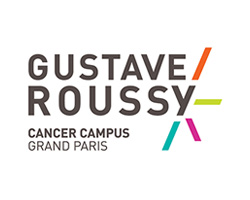AI-based classification of anticancer drugs reveals nucleolar condensation as a predictor of immunogenicity
Résumé
BACKGROUND: Immunogenic cell death (ICD) inducers are often identified in phenotypic screening campaigns by the release or surface exposure of various danger-associated molecular patterns (DAMPs) from malignant cells. This study aimed to streamline the identification of ICD inducers by leveraging cellular morphological correlates of ICD, specifically the condensation of nucleoli (CON).
METHODS: We applied artificial intelligence (AI)-based imaging analyses to Cell Paint-stained cells exposed to drug libraries, identifying CON as a marker for ICD. CON was characterized using SYTO 14 fluorescent staining and holotomographic microscopy, and visualized by AI-deconvoluted transmitted light microscopy. A neural networkbased quantitative structure-activity relationship (QSAR) model was trained to link molecular descriptors of compounds to the CON phenotype, and the classifier was validated using an independent dataset from the NCIcurated mechanistic collection of anticancer agents.
RESULTS: CON strongly correlated with the inhibition of DNA-to-RNA transcription. Cytotoxic drugs that inhibit RNA synthesis without causing DNA damage were as effective as conventional cytotoxicants in inducing ICD, as demonstrated by DAMPs release/exposure and vaccination efficacy in mice. The QSAR classifier successfully predicted drugs with a high likelihood of inducing CON.
CONCLUSIONS: We developed AI-based algorithms for predicting CON-inducing drugs based on molecular descriptors and their validation using automated micrographs analysis, offering a new approach for screening ICD inducers with minimized adverse effects in cancer therapy.
| Origine | Fichiers éditeurs autorisés sur une archive ouverte |
|---|





